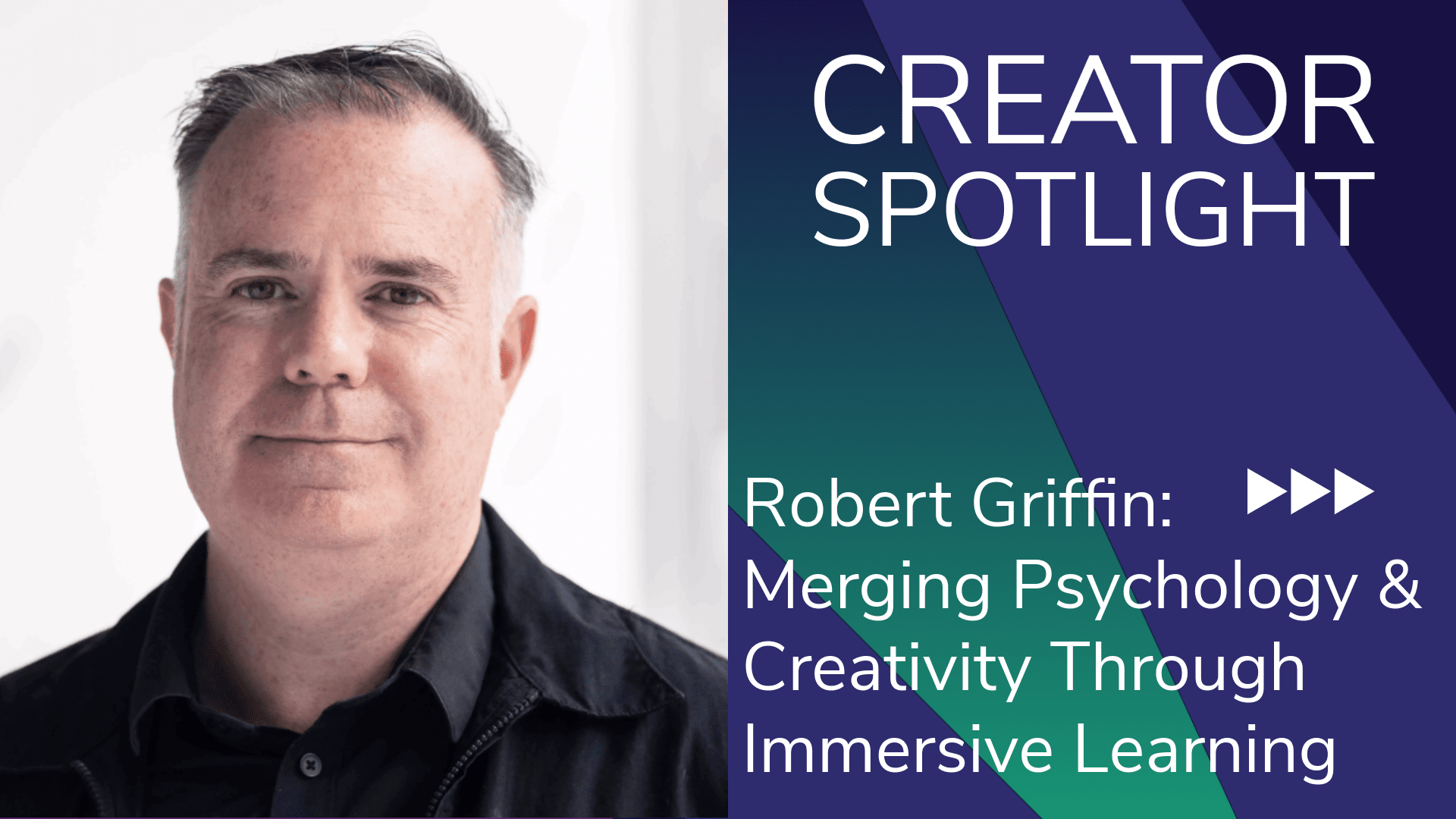
About Robert
Robert Griffin is a lecturer at the Institute of Art, Design, and Technology (IADT) in Dublin, Ireland, where he teaches across technology and psychology courses, including the Master’s in Cyberpsychology. Over the last few years, he’s helped students use immersive technology for research, experimentation, and creative exploration, bridging technical and psychological perspectives in unique ways.
We’ve been doing things like workshops with 360 cameras, a bit of Unity—building their own worlds. Psychology students have been using them for major research projects. They’ve been doing studies and experiments using virtual reality, and I’m helping guide that.
Immersive Learning Across Disciplines
At IADT, immersive technology isn’t confined to one department. Robert notes that it’s been embraced by artists, filmmakers, and animators alike.
One colleague, for example, created a stereoscopic 360° film about a famous Irish painting, merging VR storytelling with visual art. The project was shown in galleries, where viewers could experience the painting virtually prior to standing before the real piece.
Meanwhile, Robert has taught electives like Storytelling in the Metaverse and collaborated with the Creative Futures Academy—a partnership between IADT, the National College of Art and Design (NCAD), and University College Dublin (UCD)—to deliver short, experimental courses on emerging creative technologies.
“There’s quite a lot going on. Students are building their own worlds, telling stories, and creating immersive spaces to communicate ideas.”
Creating Accessible On-Ramps to VR
While Robert enjoys teaching technical topics, he’s aware that tools like Unity can be daunting for newcomers. His goal is to make VR creation more accessible to students from creative and non-technical backgrounds.
He emphasizes that templates and no-code tools play an important role in lowering those barriers.
“Ways of making that easier are of great interest to me. The idea of having no code involved is really good. It’s similar to the Zoe template; you can get someone up and running quite quickly.”
Robert also appreciates how Zoe for Unity streamlines the testing process: learners can preview and iterate directly in the browser without having to export or recompile projects repeatedly.
For students with limited experience or older hardware, that’s transformative.
Designing a Virtual Open Day
As part of the Zoe Creator Program, Robert built an immersive experience that brings the IADT psychology program to life for prospective students. His project: a virtual open day that combines interactive exhibits, student research, and a digital campus walkthrough.
“I thought about a virtual open day… sometimes people can’t travel to an open day, so I wanted to make something that would show what we do in psychology…how practical and applied it really is.”
Inside the headset, visitors find themselves in a bright, gallery-like environment where they can explore:
- Posters of student research projects, displayed as if in a real academic showcase
- Interactive learning stations, like a large 3D brain model that students can label using the MX Ink stylus
- Videos narrated by students, playing on virtual walls like a museum exhibit
- Visual maps of the campus and program modules, helping visitors imagine their journey at IADT
“Doing something physical adds to how memorable something is. Even by labeling the brain themselves, they could stand back and see the different parts in their own handwriting.”
The result is both practical and inspirational: an immersive environment that transforms static course materials into a living, explorable space.
Unity reminds me a bit of a theater. You’ve got the stage, the backstage area, the scene—you’ve even got scripts to tell things what to do. It’s like being a director. You decide what happens in the space, how people interact, and how you guide them through it.
Teaching Creativity Through Technology
For Robert, teaching VR development is less about code and more about creative direction, helping students understand how to design meaningful experiences.
This creative framing helps students from non-technical backgrounds find their footing in VR, encouraging them to think spatially and narratively rather than focusing purely on code.
He also finds that once learners get past the initial setup hurdles, confidence builds fast.
“The first two or three classes, they get really frustrated. But then suddenly, it clicks. Towards the end, they’re like, ‘Oh, I can make anything!’”
Advice for Educators Exploring VR
Robert’s advice to educators curious about immersive technology is simple: start small, and experiment.
“People see it and think, that looks really hard. But tools are making it more accessible all the time. Once you get something up and running and view it in a headset, it’s a great motivator.”
He sees this democratization of technology as part of a larger pattern: just as website creation evolved from hand-coded HTML to easy drag-and-drop tools, VR development is following the same trajectory.
And for educators, that means new opportunities to make learning interactive, memorable, and inclusive.
Looking Ahead
Robert’s work at IADT is a model of what’s possible when creativity and technology meet. From psychology research to metaverse storytelling, his approach shows how immersive learning can empower students to explore, create, and connect—without needing a programming background.
“Once they get the basics, building on that is straightforward enough. And being able to view it in the headset is a great motivator.”
Experience What’s Possible with Zoe
Zoe makes immersive learning creation more accessible for educators and students alike—no coding required.
- Explore, build, and share 3D learning experiences directly in Unity or the Zoe app.
- Join a community of creators shaping the future of education.




